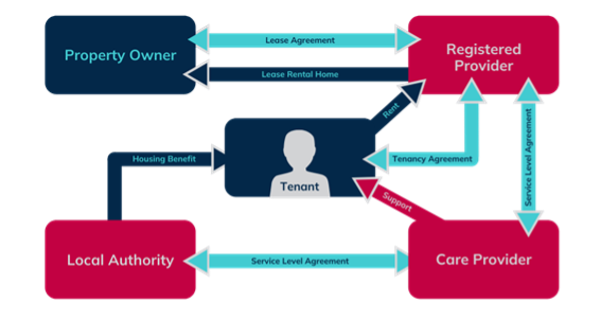Since Supported Living Gateway was setup three years ago, we have been inundated with domiciliary care providers looking to expand their services to take on property and move into the supported living sector.
We completely understand the desire for this move, not only to broaden their offering, but also to make their overall operation easier and smoother to operate.
This is because with domiciliary care, the providers’ care staff travel to people’s homes in a geographical area, whereas with supported living, the staff have no travel costs as they are based in one location. This brings down the overall running costs of the business and helps to recruit and retain staff.
From having numerous conversations with professional, CQC registered providers, their knowledge around care, council frameworks, OFSTED and CQC registrations are second to none.
However, invariably there is a distinct lack of knowledge about the duties and responsibilities of taking on a property for supported living.
Some of the things to consider:
- Legal agreements – needs to be a lease and not a normal rental agreement.
- Grant – is there funding available for any adaptations, and dependent on the tenant, then yes there is.
- Maintenance and repairs – who is responsible and would be negotiated as part of the lease agreement.
- Rental payments, are these LHA, Open Market or Exempt rates?
- Due diligence – questions you need to have answered around the property and the landlord.
Also, most councils and the CQC want to see a separation between housing and care and can insist on a “Registered Provider of Social Housing” to be involved (please note, in most cases, this isn’t the landlord who owns the property, and could be a Housing Association, CIC, Local Authority etc.).
You can find a complete list of the RP’s here Regulator of Social Housing - GOV.UK (www.gov.uk), or talk to us as we have a multitude of RP’s we work with around the UK.
This is a diagram of a typical relationship between all interested parties.

For more information on how to source and secure a property, where to find landlords and how to make sure you undergo a due diligence process before you commit, click the link below to find out more. Care Provider - Property Course
Or send us an email to discuss your options at hello@supportedlivinggateway.com





